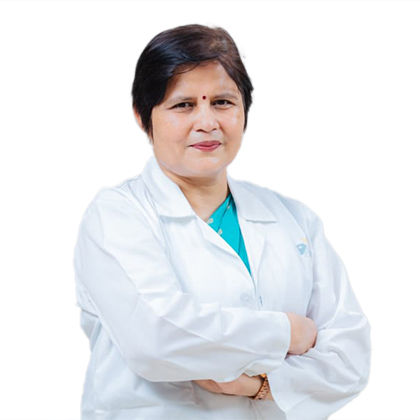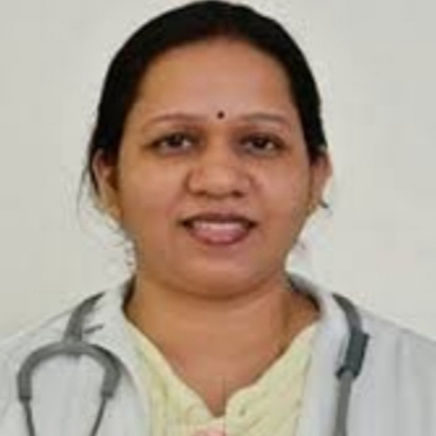Endometriosis vs. Adenomyosis Differences
Find out how endometriosis and adenomyosis may appear similar, but are starkly different conditions. But, with the right approach it is possible to manage them.

Written by Dr Sonia Bhatt
Last updated on 3rd Jul, 2025
Endometriosis and adenomyosis are two distinct gynaecological conditions, yet are related to each other. Both of these conditions affect women's quality of life. Endometriosis occurs when endometrial-like tissue grows outside of the uterus, leading to pain and discomfort. Conversely, adenomyosis appears when endometrial tissue is built up in the uterine muscle. It leads to complications like menstrual bleeding, cramping, and an enlarged uterus. These two conditions share overlapping symptoms. Thus, understanding their differences is crucial for accurate diagnosis and effective treatment.
Causes and Risk Factors
Some of the leading causes of endometriosis are –
Retrograde Menstruation
In general, period blood leaves the body. But during retrograde menstruation, it moves backwards through the fallopian tubes. Endometrial cells in the blood then become attached to organs in the pelvis, causing endometriosis.
Embryonic Cell Transformation
Hormones may cause embryonic cells to change into endometrial-like cells outside the uterus, making the situation worse.
Immune System Disorders
If the immune system does not work, it might not be able to spot and remove endometrial-like tissue, which grows outside of the uterus, leading to this condition.
Surgical Scars
Endometrial cells may grow on surgical scars after treatments like C-sections or hysterectomies, leading to localised endometriosis.
Causes of Adenomyosis
The leading causes of adenomyosis are –
Invasive Tissue Growth
Endometrial cells can get into the muscles of the uterus. This is often a problem after invasive treatments like C-sections or other surgeries on the uterus.
Developmental Origins
During pregnancy, endometrial tissue could become ensconced in the uterus muscle, making a person more likely to develop adenomyosis later in life.
Uterine Inflammation
Inflammation of the uterus after giving birth may make the line between the endometrium and myometrium weaker, which increases the possibility of adenomyosis.
Stem Cell Origins
In some rare cases, adenomyosis occurs when stem cells from the bone marrow enter the uterine muscle.
Despite their differences, these two conditions share some common risk factors like hormonal imbalances, where the level of oestrogen greatly affects both conditions. Furthermore, women with a family history of this condition are also likely to be victims of this.
On the other hand, these two conditions have some unique risk factors as well. For instance, endometriosis is usually detected among women during their reproductive years. But, adenomyosis is more common in women in their late 30s and 40s, especially those with a history of childbirth.
Symptoms Comparison
Some of the common symptoms of endometriosis are –
Chronic pelvic pain
Painful periods (dysmenorrhea)
Pain during intercourse (dyspareunia)
Heavy menstrual bleeding
Infertility
Some common symptoms of adenomyosis are –
Enlarged uterus
Severe cramping during periods
Chronic pelvic pain
Heavy or prolonged menstrual bleeding
Painful intercourse
In terms of overlapping symptoms, it is hard to tell the difference between the two diseases because they both cause chronic pelvic pain and heavy and painful periods. When someone has adenomyosis, they usually have a swollen uterus, but when someone has endometriosis, this is not usually the case. However, it is not always possible to identify with the naked eye; individuals need to see a doctor when they experience symptoms.
Top Obstetrics and gynaecologist
Diagnosis Techniques
The diagnostics methods for endometriosis are –
Pelvic Exam: A physical check to look for problems like cysts or scar tissue.
Ultrasound: It works well for finding ovarian endometriomas but not for smaller or deeper tumours.
Laparoscopy: Minimally invasive surgery like this is the gold standard because it lets doctors see and remove endometrial tumours directly, which confirms the diagnosis.
The different ways to diagnose adenomyosis are –
Physical Exam: A physical check will often show that the uterus is swollen and painful.
Ultrasound: Usually used to find uterine thickening or abnormalities linked to adenomyosis.
MRI: Shows detailed pictures of uterine tissues and proves the presence of adenomyosis by demonstrating endometrial expansion into the myometrium.
Endometriosis and adenomyosis can look like similar gynaecological diseases, but they present significant diagnosis challenges due to their overlapping symptoms. In either case, misdiagnosis and delays are common, as the symptoms can mimic each other and other gynaecological or gastrointestinal disorders.
Treatment Options
The treatment approaches for endometriosis include –
Hormonal Therapy: By lowering oestrogen levels, birth control pills, progestins, and GnRH agonists help people with symptoms.
Pain Relief: NSAIDs, which stand for nonsteroidal anti-inflammatory drugs, ease pain.
Surgery: Laparoscopy can remove uterine growths and make it easier to get pregnant.
The treatment approaches for adenomyosis include –
Hormonal Contraceptives: Birth control pills or IUDs that release progesterone can help with heavy bleeding and cramps.
Tranexamic Acid: Medicines that aren't hormones that stop heavy bleeding.
Hysterectomy: The only way to permanently treat adenomyosis.
The management of both these conditions primarily includes pain management. Doctors also suggest hormone therapy as it shows considerable results over time. Usually, doctors keep the surgical intervention as the last option in case the woman cannot bear the pain and discomfort.
Impact on Quality of Life
Endometriosis and adenomyosis can significantly affect the quality of life in women. They impact the physical health and emotional well-being of the sufferer. These two conditions, persistent pelvic pain, heavy menstrual bleeding and fatigue, greatly affect the productivity of women and limit their mobility. Psychologically, the insistent nature of the conditions leads to depression, anxiety and feelings of being left alone.
The impact of endometriosis and adenomyosis on women's fertility is also profound. While endometriosis is a leading cause of infertility, adenomyosis is less directly associated with infertility, but it can complicate pregnancy outcomes.
Additionally, both these conditions have long-term effects on women's health. They increase the risk of anaemia due to chronic blood loss, alongside the potential complications from delayed diagnosis or inadequate treatment.
Myths and Misconceptions
Some of the common misunderstandings related to endometriosis are –
Myth: Endometriosis only happens to older women.
Fact: It can also happen to teens and young women.Myth: Getting pregnant can cure endometriosis.
Fact: Symptoms may improve for a while but can return after giving birth.
Similarly, some of the common misunderstandings related to adenomyosis –
Myth: It's not common to have adenomyosis.
Fact: It happens more often than thought, but people don't always know they have it.Myth: The only cure is an abortion.
Fact: In many cases, hormone treatments can help control symptoms.
Living with Endometriosis and Adenomyosis
Living with endometriosis or adenomyosis is challenging, but adopting effective coping strategies and accessing support systems can make a significant difference. Here are more details –
Coping Strategies
Taking regular medications
Maintaining a healthy lifestyle with regular exercise and a balanced diet
Practising stress management techniques like yoga or meditation
Support Systems and Resources
Joining support groups
Learning about the condition in detail through scholarly articles, blogs and books
Seeking professional help like counselling
Conclusion
Even though endometriosis and adenomyosis exhibit almost similar symptoms, they are very different conditions. While endometriosis affects fertility and grows outside the uterus, adenomyosis is an internal condition where tissue invades the uterine muscle and makes the uterus bigger. However, with early diagnosis, proper treatment, and lifestyle changes, women can get better and live healthy lives.
Consult Top Obstetrics and gynaecologist
Consult Top Obstetrics and gynaecologist

Dr. Abhishek Daga
Obstetrician and Gynaecologist
20 Years • MBBS, MS (Obstetrics & Gynaecology)
Kolkata
Gynae Care Fertility Centre, Kolkata
(150+ Patients)

Dr Bhawna Garg
Gynaecological Oncologist
26 Years • MBBS, MS, (PGI MS ROHTAK) FELLOWSHIP GYNECOLOGY ONCOLOGY, (CANCER INSTITUTE CHENNAI)
Delhi
Apollo Hospitals Indraprastha, Delhi

Dr. Vineet Mishra
Infertility Specialist
36 Years • MD, Phd, DSc
Ahmedabad
Apollo Hospitals - Gandhinagar, Ahmedabad, Ahmedabad

Dr. Wahida Suresh
Obstetrician and Gynaecologist
27 Years • MBBS, DNB, MNAMS Obstetrician & Gynaecologist, Fertility Specialist
Chennai
Apollo Speciality Hospitals OMR, Chennai
(175+ Patients)

Dr. Vandana Sinha
Obstetrician and Gynaecologist
14 Years • MBBS, MS(Obs & Gyn), Fellow in Gynec-Onco. & Gynec Endoscopy
Ahmedabad
Apollo Hospitals Gandhinagar, Ahmedabad
(175+ Patients)
Top Obstetrics and gynaecologist

Dr. Abhishek Daga
Obstetrician and Gynaecologist
20 Years • MBBS, MS (Obstetrics & Gynaecology)
Kolkata
Gynae Care Fertility Centre, Kolkata
(150+ Patients)

Dr Bhawna Garg
Gynaecological Oncologist
26 Years • MBBS, MS, (PGI MS ROHTAK) FELLOWSHIP GYNECOLOGY ONCOLOGY, (CANCER INSTITUTE CHENNAI)
Delhi
Apollo Hospitals Indraprastha, Delhi

Dr. Vineet Mishra
Infertility Specialist
36 Years • MD, Phd, DSc
Ahmedabad
Apollo Hospitals - Gandhinagar, Ahmedabad, Ahmedabad

Dr. Wahida Suresh
Obstetrician and Gynaecologist
27 Years • MBBS, DNB, MNAMS Obstetrician & Gynaecologist, Fertility Specialist
Chennai
Apollo Speciality Hospitals OMR, Chennai
(175+ Patients)

Dr. Vandana Sinha
Obstetrician and Gynaecologist
14 Years • MBBS, MS(Obs & Gyn), Fellow in Gynec-Onco. & Gynec Endoscopy
Ahmedabad
Apollo Hospitals Gandhinagar, Ahmedabad
(175+ Patients)




